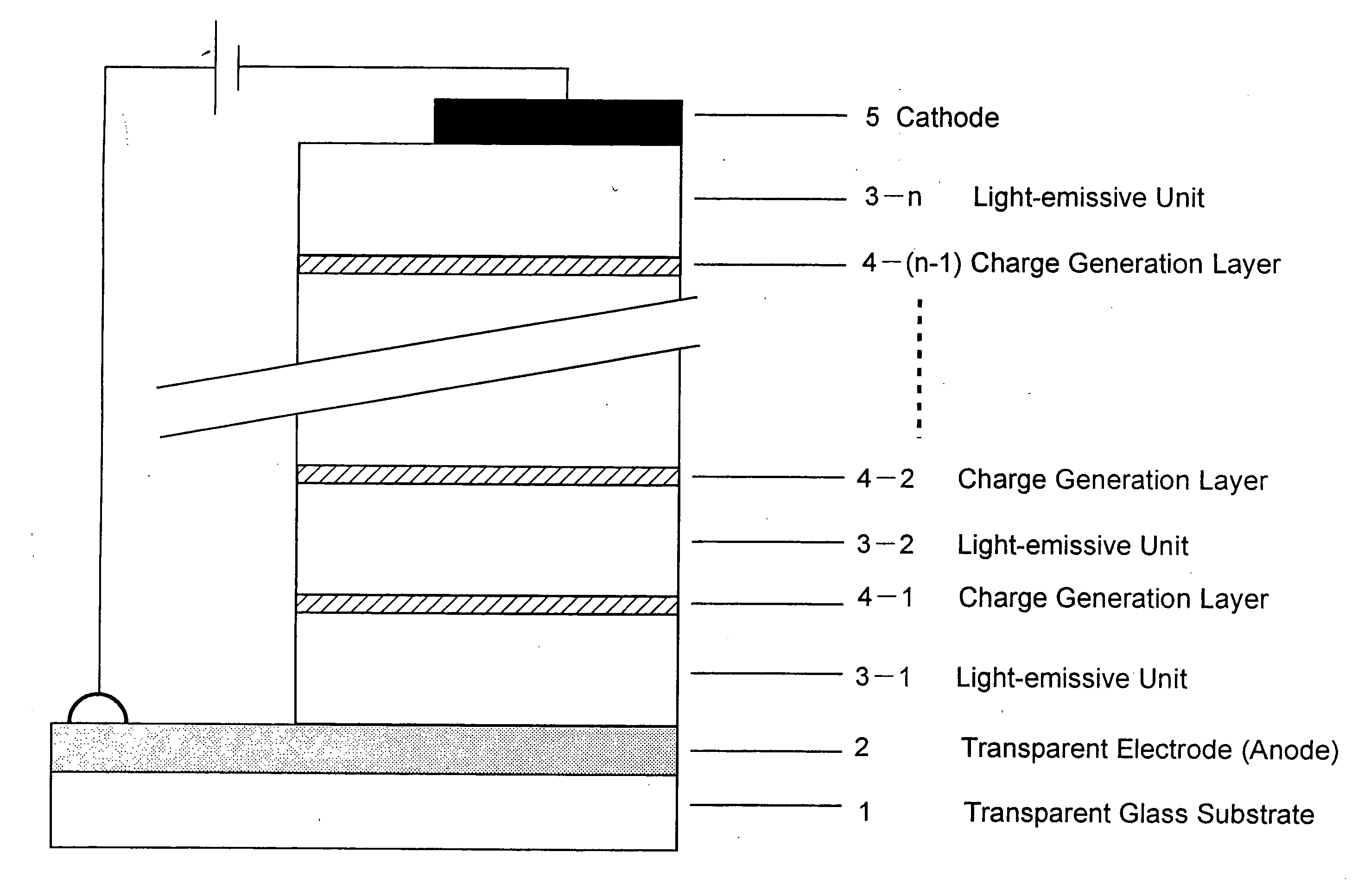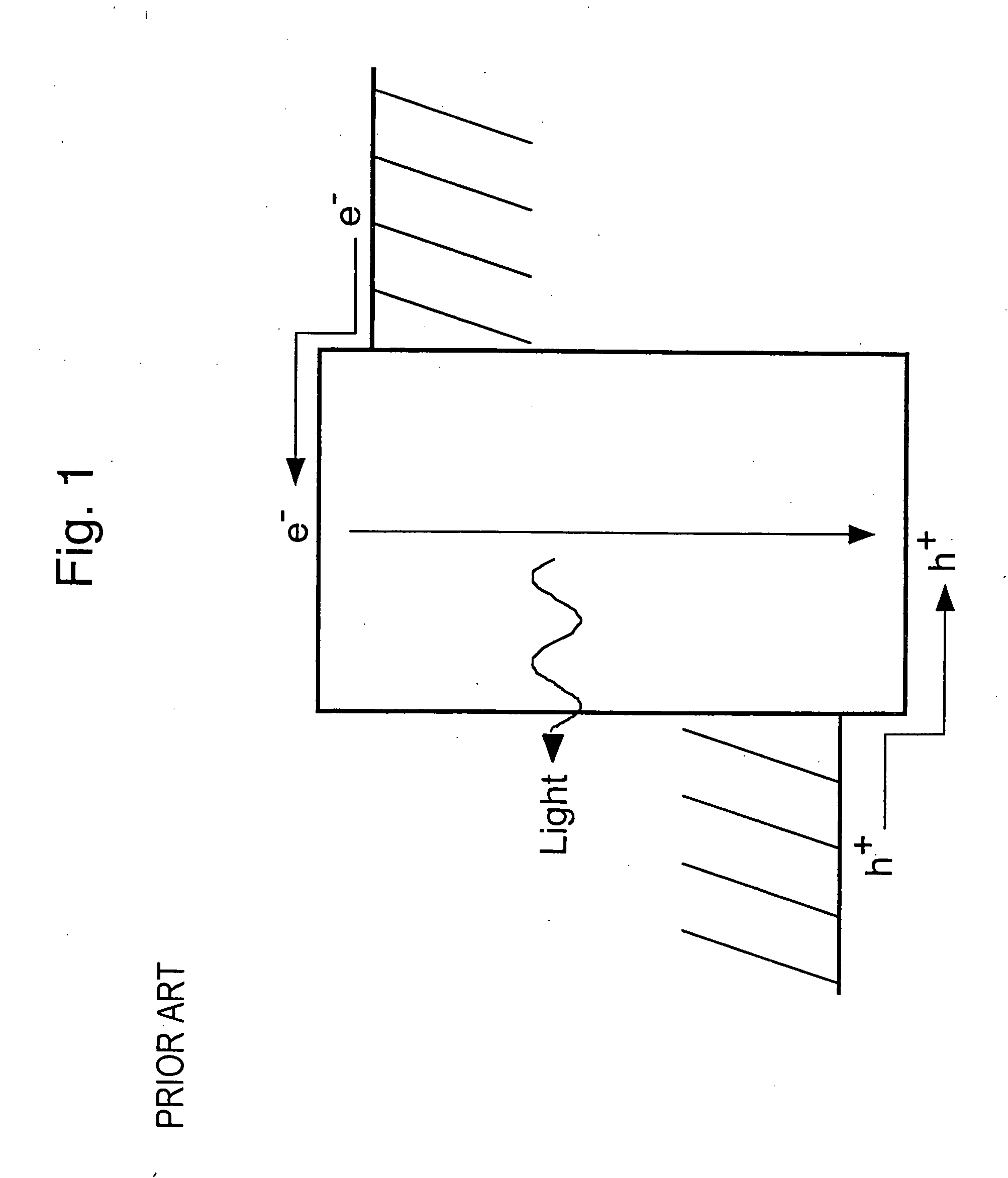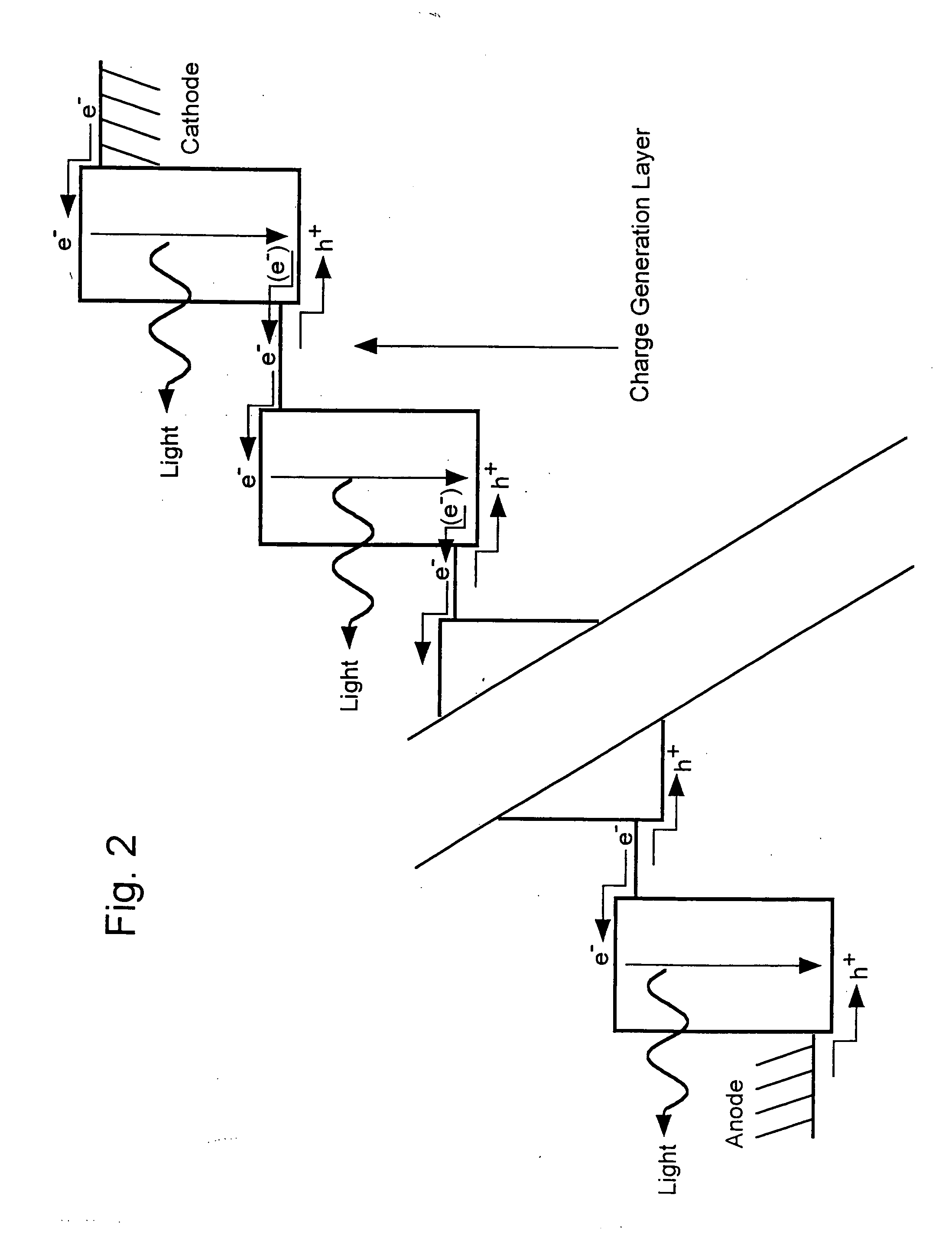Organic electroluminescent device
a technology of electroluminescent devices and organic el, which is applied in the direction of discharge tube luminescnet screens, organic chemistry, transportation and packaging, etc., can solve the problems of low power conversion efficiency (w/w), difficult to achieve the required practical operation life-time (10,000 hours or more), and achieves long operational life time, high luminance, and effective and stable device provision
- Summary
- Abstract
- Description
- Claims
- Application Information
AI Technical Summary
Benefits of technology
Problems solved by technology
Method used
Image
Examples
reference example 1
(Example for the Production of the Conventional Organic EL Device-Green Light-Emitting Device)
[0204] The conventional organic EL device having a laminate structure shown in FIG. 9 was produced as follows.
[0205] A glass substrate 1 used herein includes, coated in the predetermined pattern on a surface thereof, a transparent anode electrode 2 including an ITO (indium-tin oxide, sputtered product commercially available from ASAHI GLASS, or ion plating product commercially available from Nippon Sheet Glass Co., Ltd.) having a sheet resistance of about 20 Ω / □ (Ω / sq.) (see, FIG. 10A). Alpha (α)—NPD having a hole transporting property was deposited, through a metal mask (shadow mask) 40 for organic layer formation (see FIG. 10B), onto the ITO-coated glass substrate 1 under vacuum of about 10−6 Torr and at a deposition rate of about 2 Å / sec to form a hole transportation layer 6 having a thickness of about 700 Å.
[0206] An organic-metal complex of tris(8-quinolinolato) aluminum (hereinaft...
reference example 2
(Example for the Production of the Conventional Organic EL Device-Blue Light-Emitting Device)
[0213] A conventional organic EL device having a laminate structure shown in FIG. 11 was produced in accordance with the manner similar to Reference Example 1 as follows.
[0214] A glass substrate 1 used herein includes, coated in the predetermined pattern on a surface thereof, a transparent anode electrode 2 including an ITO (indium-tin oxide, sputtered product commercially available from ASAHI GLASS) having a sheet resistance of about 20 Ω / □ (see, FIG. 10A). Spiro-NPB having a hole transporting property was deposited, through a metal mask 40 for organic layer formation (see, FIG. 10B), onto the ITO-coated glass substrate 1 under vacuum of about 10−6 Torr and at a deposition rate of about 2 Å / sec to form a hole transportation layer 9 having a thickness of about 800 Å.
[0215] Spiro-DPVBi represented by the following formula:
was deposited onto the hole transportation layer 9 under vacuum ...
reference example 3
(Example for the Production of the Conventional Organic EL Device-Red Light-Emitting Device)
[0221] A conventional organic EL device having a laminate structure shown in FIG. 12 was produced in a manner similar to Reference Example 1 as follows.
[0222] A glass substrate 1 used herein includes, coated in the predetermined pattern on a surface thereof, a transparent anode electrode 2 including an ITO (indium-tin oxide, sputtered product commercially available from ASAHI GLASS) having a sheet resistance of about 20 Ω / □ (see, FIG. 10A). α-NPD having a hole transporting property was deposited, through a metal mask 40 for organic layer formation (see, FIG. 10B), onto the ITO-coated glass substrate 1 under vacuum of about 10−6 Torr and at a deposition rate of about 2 Å / sec to form a hole transportation layer 12 having a thickness of about 700 Å.
[0223] Alq and a red light-emissive fluorescent dye, “DCJTB” (trade name) commercially available from KODAK, were deposited onto the hole transpo...
PUM
| Property | Measurement | Unit |
|---|---|---|
| Angle | aaaaa | aaaaa |
| Nanoscale particle size | aaaaa | aaaaa |
| Electrical resistivity | aaaaa | aaaaa |
Abstract
Description
Claims
Application Information
 Login to View More
Login to View More - R&D
- Intellectual Property
- Life Sciences
- Materials
- Tech Scout
- Unparalleled Data Quality
- Higher Quality Content
- 60% Fewer Hallucinations
Browse by: Latest US Patents, China's latest patents, Technical Efficacy Thesaurus, Application Domain, Technology Topic, Popular Technical Reports.
© 2025 PatSnap. All rights reserved.Legal|Privacy policy|Modern Slavery Act Transparency Statement|Sitemap|About US| Contact US: help@patsnap.com



